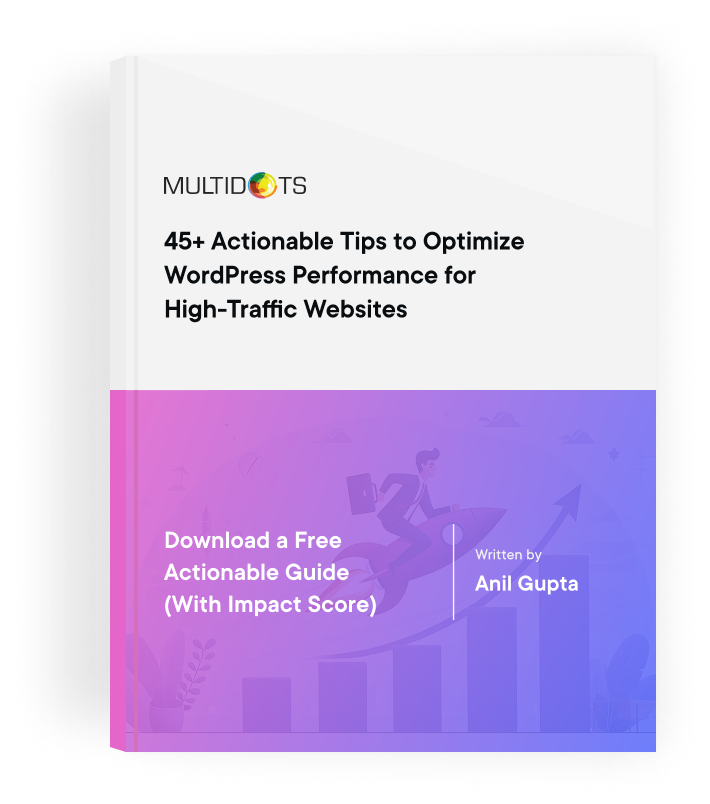Top 6 AEM Challenges from the Customer’s Perspective
AEM giving you headaches? Learn to conquer common challenges and explore WordPress as a powerful, cost-effective alternative.

Table of Contents
Adobe Experience Manager (AEM) is a powerful tool, but it can be a real headache for teams dealing with slow performance, clunky workflows, and tough integrations. If you’re feeling stuck, you’re not alone. In this article, we’ll dive into some of the most common AEM challenges and offer practical tips to help you tackle them. And if you’re thinking about switching to something more flexible, we’ll also look at an alternative that could be just what you’re looking for. Hint: it’s WordPress.
Unveiling the Top 6 AEM Challenges
AEM is a solid platform for managing digital experiences, but let’s face it – nothing’s perfect! From slow performance to a complicated interface, such issues can make it tough to keep everything running smoothly.
To really get the best out of AEM, it’s important to face these problems directly. By working through them, your team can operate more efficiently, engage users more effectively, and get a better return on your investment. Here, we’re going to break down the top six AEM challenges and share practical tips to help you overcome them and keep your website on track!
1. Conquering AEM performance hurdles
Performance is one of the biggest factors in delivering a smooth digital experience. Unfortunately, AEM users often run into performance roadblocks that can disrupt both user engagement and SEO rankings. Some of the most common issues include slow page load times, content bottlenecks, and sluggish performance with large media libraries.
Other frequent challenges involve memory management problems that slow down the system, indexing issues that affect search speed, and replication delays that make it hard to publish content across different environments. Most of these issues come down to improper configuration, lack of optimization, or under-resourced systems.
To tackle these performance hurdles, try the following strategies:
- Implement advanced caching strategies and use AEM's built-in CDN to boost content delivery speed.
- Fine-tune your dispatcher configuration to improve how content gets served to users.
- Use AEM's Operations Dashboard to monitor performance and catch issues early.
- Regularly maintain and optimize indexes to keep search functionality fast and efficient.
- For media-heavy sites, adopt asset management best practices like adaptive image serving to improve performance.
- Think about moving to AEM as a Cloud Service for automatic scaling and better performance optimization.
2. Mastering AEM as a CMS
Mastering AEM as a CMS can be a bit overwhelming. While it’s a powerful tool, its feature-packed interface can slow things down, especially for teams that are just getting started. There’s a lot to work out, and without a plan, you might find productivity takes a hit. Larger enterprises also face challenges like content fragmentation and asset management, which can complicate things even more.
Here’s how to tackle it:
- Navigating the Interface: Start small by focusing on the basics – content authoring, workflows, and publishing – before jumping into more advanced features. Breaking the interface down into smaller sections makes it easier to manage.
- Avoiding Content Fragmentation: One common issue with AEM is content becoming scattered across the platform. A centralized content strategy keeps everything organized and ensures consistency across teams.
- Asset Management Best Practices: Use AEM’s metadata tagging and search features to streamline asset management. This helps keep everything easy to find and speeds up content production.
It’s also worth mentioning that AEM does have a steeper learning curve than many other CMS platforms. Teams new to AEM should take advantage of training resources to help them get up to speed. With proper training and a solid content strategy, your team can fully tap into AEM’s potential, boosting efficiency and improving workflows.
3. Tackling Memory and Indexing Roadblocks
Memory and indexing issues can be major headaches in AEM, often causing slowdowns or unreliable search results. If you’re seeing frequent crashes, like the dreaded "OutOfMemoryError," or searches that are sluggish or failing, it’s a clear sign something’s not right.
These problems usually come from memory leaks in the Java application, poor maintenance routines, or corrupt segments in Tar storage. Here’s how you can address them:
- Memory Issues: Start by capturing heap dumps to analyze memory usage and look for leaks with tools like Eclipse MAT. If you notice your system’s "Old Generation" memory is consistently high, it’s probably time for garbage collection or optimizing the heap.
- Indexing Problems: Keeping up with regular maintenance is key to avoiding indexing slowdowns. Purging old versions and running garbage collection can help keep things running smoothly. If searches are failing or returning incomplete results, use AEM’s built-in tools to monitor and improve indexing performance.
4. Boosting Efficiency and Creativity with AEM Authoring
Getting used to AEM’s authoring tools can be tough. The interface is powerful, but it can initially feel overwhelming with all the packed features. Teams often run into issues like content fragmentation and managing an ever-growing number of digital assets, which can slow down the authoring process and make it more complicated than it needs to be.
Here’s how to make it easier:
- Interface Navigation: AEM’s interface can be tricky, even for experienced users. The best way to tackle it is to start simple – focus on the basics before diving into advanced features. Custom workflows tailored to your team’s needs can also help simplify things and make the platform feel less overwhelming.
- Managing Content Fragmentation: As content grows, fragmentation becomes a real problem, making it harder to keep everything consistent. Using content fragments for reusable content can help keep things organized. This way, teams can pull from a centralized source instead of recreating the same assets over and over.
- Asset Management Best Practices: Asset management can slow down the entire process if not handled properly. A solid metadata strategy is key here. By tagging and organizing assets effectively, your team can find and use resources faster, speeding up the authoring process.
A well-structured workflow makes a huge difference in both efficiency and creativity. When teams know exactly where to find assets and manage content without a hitch, they can focus more on producing great work and less on dealing with technical hassles. With the right setup, AEM becomes easier to use and lets your team reach its full creative potential.
5. Integrating AEM with Your Tech Ecosystem
One of the advantages of AEM is its integration with the rest of the Adobe product suite, but integrating with third-party software – like CRM systems, marketing automation tools, and eCommerce platforms – can be far more complicated. These integrations are crucial for creating a unified digital experience, but they often come with their own set of challenges.
Teams frequently encounter problems like data synchronization failures, inconsistent workflows, and security concerns during integration. Without proper middleware or APIs, getting AEM to communicate with external systems can lead to bottlenecks in operations.
Successful integration starts with a thorough understanding of the specific requirements of both AEM and the third-party system. Using available connectors or APIs is often the most straightforward way to streamline integration, but they should be evaluated carefully to ensure compatibility. Middleware solutions can also play a vital role in bridging the gap between AEM and other platforms, especially when custom integrations are required.
And remember, don’t overlook security – implementing strong authentication and secure API communication is key to protecting data as it moves between systems. Always make sure any integration is set up with the latest security best practices in mind!
6. Navigating AEM Cloud Migration
Migrating to AEM as a Cloud Service might seem like a big project, but with a solid strategy, it’s definitely manageable – and the long-term benefits are hard to ignore. However, the process comes with its own challenges, especially when you’re moving large amounts of data, ensuring compatibility, and planning for future scalability.
One of the biggest hurdles is transferring large volumes of data. This can get tricky and time-consuming, especially if your current system wasn’t built with cloud migration in mind. Then there’s the issue of scalability – your migration plan has to account for your future growth, or you risk performance issues down the line.
A successful migration starts with thorough planning. Break down the process into smaller steps, beginning with a detailed plan for transferring data. Make sure to address any compatibility concerns with your existing systems early on. Automated migration tools can make this process smoother, reducing the risk of errors and speeding things up. Don’t skip testing – run extensive tests to ensure your workflows, integrations, and performance work in the new cloud environment.
Once your migration is complete, you’ll see huge improvements. The cloud’s automatic scalability allows your systems to grow effortlessly with your business, and you’ll reduce infrastructure and maintenance costs. You’ll also benefit from better uptime and enhanced security, making your operations more resilient against traffic spikes or hardware issues.
Ultimately, migrating to AEM as a Cloud Service isn’t just about improving your current setup – it’s about future-proofing your business. With the right approach, you’ll build a flexible, cost-efficient foundation that supports long-term growth!
Beyond AEM: Exploring WordPress as a Flexible Alternative
If you’re feeling bogged down by AEM’s complexities or in need of something more adaptable, WordPress is a great alternative. As an open source CMS that powers over 40% of the web, WordPress offers unmatched flexibility, customization, and a supportive global community. Whether you’re running a simple website or managing a large multi-site setup, WordPress has proven itself as a highly versatile platform.
One of the biggest advantages WordPress has over AEM is its lower total cost of ownership. You’re not dealing with hefty licensing fees, yet you still get powerful content management tools and a nearly limitless selection of themes and plugins to tailor the platform to your needs. This flexibility makes it easier to align WordPress with your business goals without breaking the bank.
For teams struggling with AEM’s complex authoring tools, WordPress offers a much more user-friendly interface. It simplifies content creation and includes built-in responsive design, so your site looks great on any device without the extra hassle. WordPress also integrates more easily with third-party systems like CRMs or eCommerce platforms, thanks to its massive plugin ecosystem. Plus, WordPress scales smoothly, allowing your site to grow without the skyrocketing operational costs you might face with AEM.
Last but not least, when it comes to security, WordPress can be just as secure as AEM if properly configured. Regular updates, secure plugins, and a well-maintained environment will protect your site from threats!
At Multidots, we’ve successfully guided enterprises through complex migrations, including moving from AEM to WordPress. We know the challenges involved in these transitions and work to ensure a smooth process with minimal disruption to your business.
Transform Your Digital Experience with Multidots
As we’ve seen, AEM comes with its fair share of challenges, and businesses today need flexible, efficient solutions to stay ahead. Multidots offers a fresh alternative with deep WordPress expertise to tackle the most common content management hurdles. Whether it’s through migrations, high-performance websites, or ongoing maintenance, Multidots has a proven track record of helping enterprises and publishers transform their digital experiences.
If you’re thinking about making a switch from AEM or simply looking to optimize your WordPress setup, Multidots can create a solution that fits your unique needs. Ready to take your website to the next level? Contact us today and let Multidots be your guide!
Feel free to schedule a quick call with our migration expert.
Contact Us
